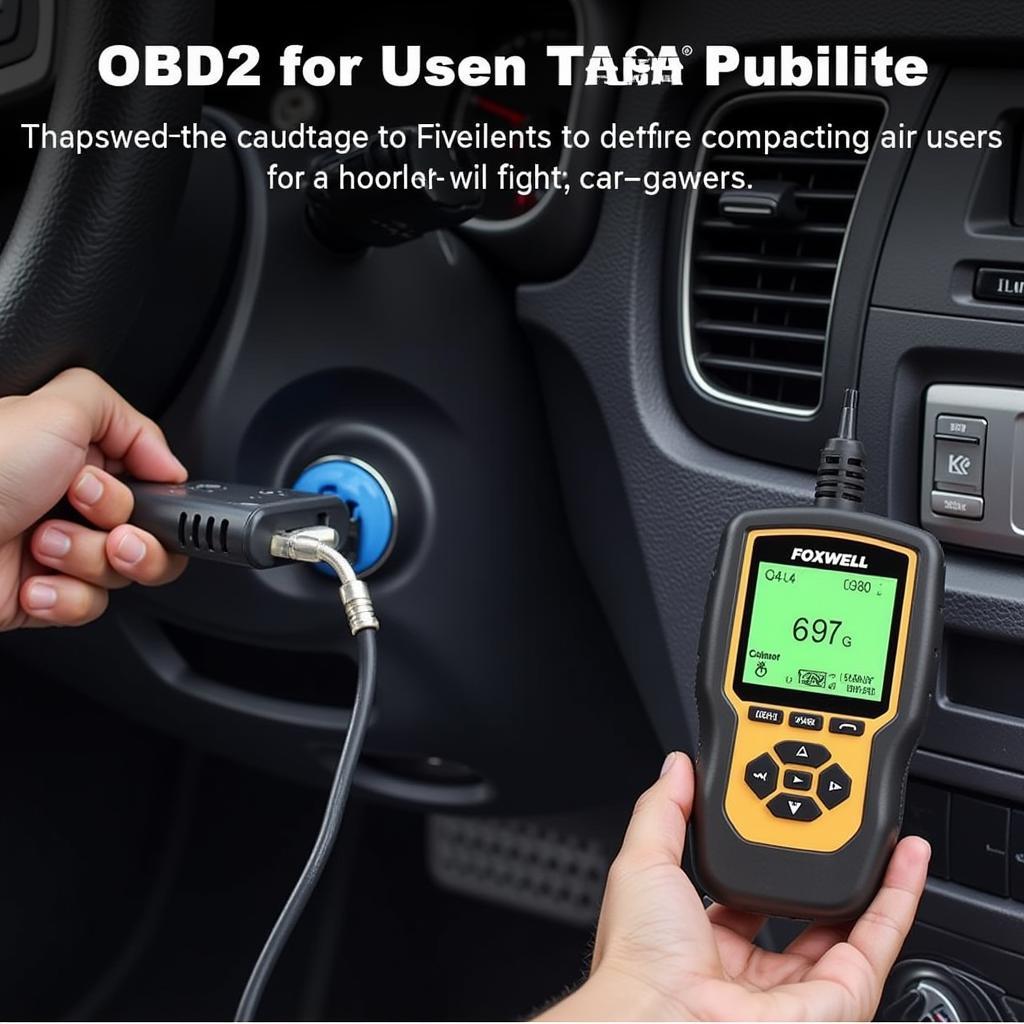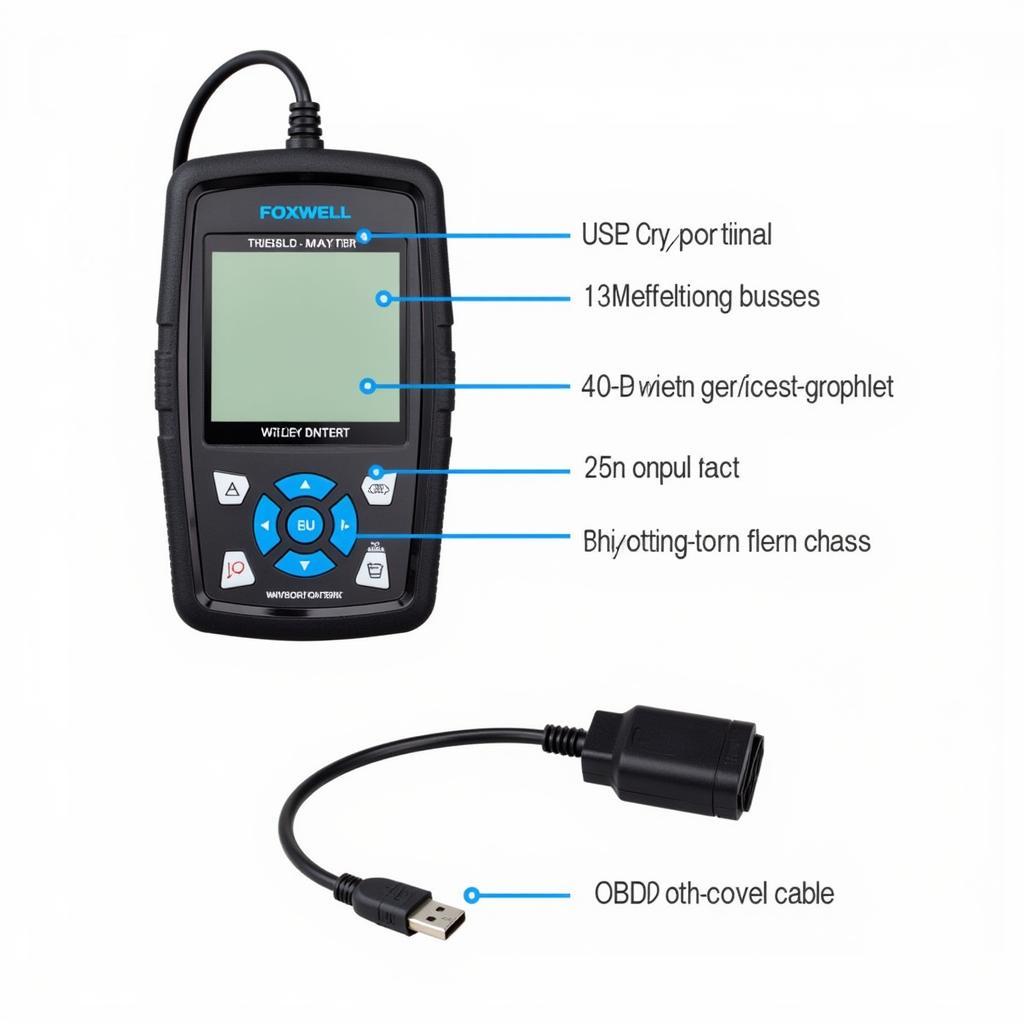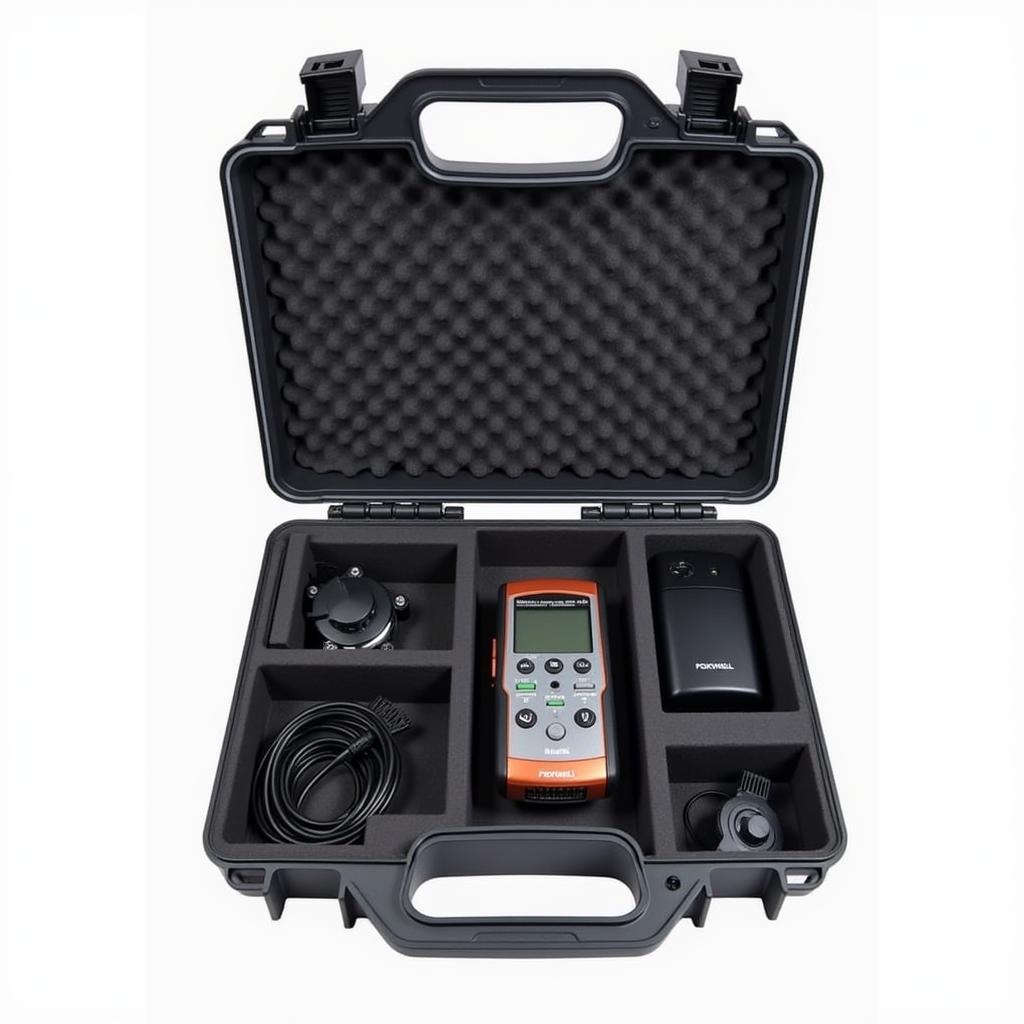The Foxwell 301 Scanner is becoming increasingly popular among car owners and for good reason. This powerful little device can help you diagnose and troubleshoot car problems without having to take your car to a mechanic.
 Foxwell 301 Scanner Plugged into OBD2 Port
Foxwell 301 Scanner Plugged into OBD2 Port
In this comprehensive guide, we’ll dive into everything you need to know about the Foxwell 301 scanner. Whether you’re a seasoned mechanic or a car enthusiast looking to do some DIY repairs, this guide will equip you with the knowledge to make the most of this versatile tool.
What is a Foxwell 301 Scanner?
A Foxwell 301 scanner, also known as an OBD2 scanner, is a handheld device that connects to your car’s onboard computer system through the OBD2 port. This port is typically located under the dashboard on the driver’s side. Once connected, the scanner can read and display diagnostic trouble codes (DTCs) stored in the car’s computer. These codes provide valuable information about the health of your car’s engine and other critical systems.
Why Do You Need a Foxwell 301 Scanner?
Owning a Foxwell 301 scanner can be incredibly beneficial for several reasons:
- Save Money on Repairs: By identifying the root cause of a problem, you can avoid unnecessary repairs and save money at the mechanic.
- Early Detection: The Foxwell 301 can detect potential issues early on, preventing minor problems from escalating into major headaches.
- Peace of Mind: Knowing you have a reliable tool to diagnose car troubles provides peace of mind, especially on long journeys.
- Increased Control: Understanding the DTCs empowers you to make informed decisions about your car’s maintenance.
What Can a Foxwell 301 Scanner Do?
The Foxwell 301 scanner offers a range of features designed to simplify the diagnostic process:
- Read and Clear DTCs: Easily read and erase diagnostic trouble codes to identify and resolve issues.
- View Live Data Stream: Monitor real-time data from various sensors, providing insights into your car’s performance.
- Check Emission Readiness Status: Determine if your car is ready for emissions testing.
- Turn Off Check Engine Light: After addressing a problem, you can use the scanner to turn off the check engine light.
- Support Multiple Protocols: The Foxwell 301 is compatible with various OBD2 protocols, ensuring compatibility with a wide range of vehicles.
Foxwell NT301 vs. Other Scanners
While there are many OBD2 scanners on the market, the Foxwell 301 stands out due to its unique features and user-friendly design. Here’s how it compares to other popular options:
- Foxwell NT301 vs. Konnwei KW850: Both offer basic OBD2 functions, but the Foxwell NT301 Konnwei 850 provides a more intuitive interface and additional features like live data streaming.
- Foxwell NT301 vs. ANCEL AD310: The ANCEL AD310 is another budget-friendly option, but the Foxwell NT301 OBD2 scanner tool boasts wider vehicle compatibility and a more durable build.
How to Use a Foxwell 301 Scanner
Using the Foxwell 301 scanner is remarkably simple:
- Locate the OBD2 Port: This port is usually under the dashboard on the driver’s side.
- Connect the Scanner: Plug the Foxwell 301 scanner into the OBD2 port.
- Turn On the Ignition: Turn the key to the “on” position without starting the engine.
- Navigate the Menu: Use the scanner’s buttons to navigate to the desired function.
- Read or Clear Codes: Follow the on-screen prompts to read or clear DTCs.
Tips for Using Your Foxwell 301 Scanner
- Consult Your Car’s Manual: Always refer to your car’s manual for specific instructions and precautions.
- Update the Scanner: Regularly update the scanner’s software to ensure optimal performance and access to the latest features.
- Record DTCs: Keep a record of the DTCs retrieved for future reference.
- Research Codes Thoroughly: Use online resources or repair manuals to understand the meaning and potential causes of each DTC.
“The Foxwell 301 is an indispensable tool for anyone who wants to take control of their car maintenance,” says John Smith, a seasoned mechanic with over 20 years of experience. “It’s easy to use, provides accurate readings, and can save you a significant amount of money in the long run.”
Foxwell NT301: A Worthy Investment
Investing in a Foxwell NT301 OBD2 scanner case is a wise decision for any car owner. Its ease of use, accurate readings, and ability to diagnose a wide range of issues make it a valuable tool for both DIY enthusiasts and professional mechanics. Don’t wait for a check engine light to ruin your day—equip yourself with a Foxwell 301 scanner and stay one step ahead of car troubles.
For more information on the Foxwell NT301 Plus review and other automotive diagnostic tools, visit ScanToolUS or call us at +1 (641) 206-8880. Our team of experts is here to answer your questions and help you find the perfect tools for your needs. We are located at 1615 S Laramie Ave, Cicero, IL 60804, USA.
FAQs
1. Can I use the Foxwell 301 scanner on any car?
The Foxwell 301 scanner is compatible with most vehicles manufactured after 1996 that are equipped with the OBD2 port.
2. What is the Foxwell NT 301 manual?
The Foxwell NT 301 manual provides detailed instructions on how to use the scanner and interpret its readings.
3. Can I update the Foxwell 301 scanner’s software?
Yes, you can update the scanner’s software through the Foxwell website.
4. Is the Foxwell 301 scanner difficult to use?
No, the Foxwell 301 scanner is designed to be user-friendly, even for beginners.
5. Can I clear DTCs with the Foxwell 301 scanner?
Yes, the Foxwell 301 scanner allows you to clear DTCs after addressing the underlying issues.


